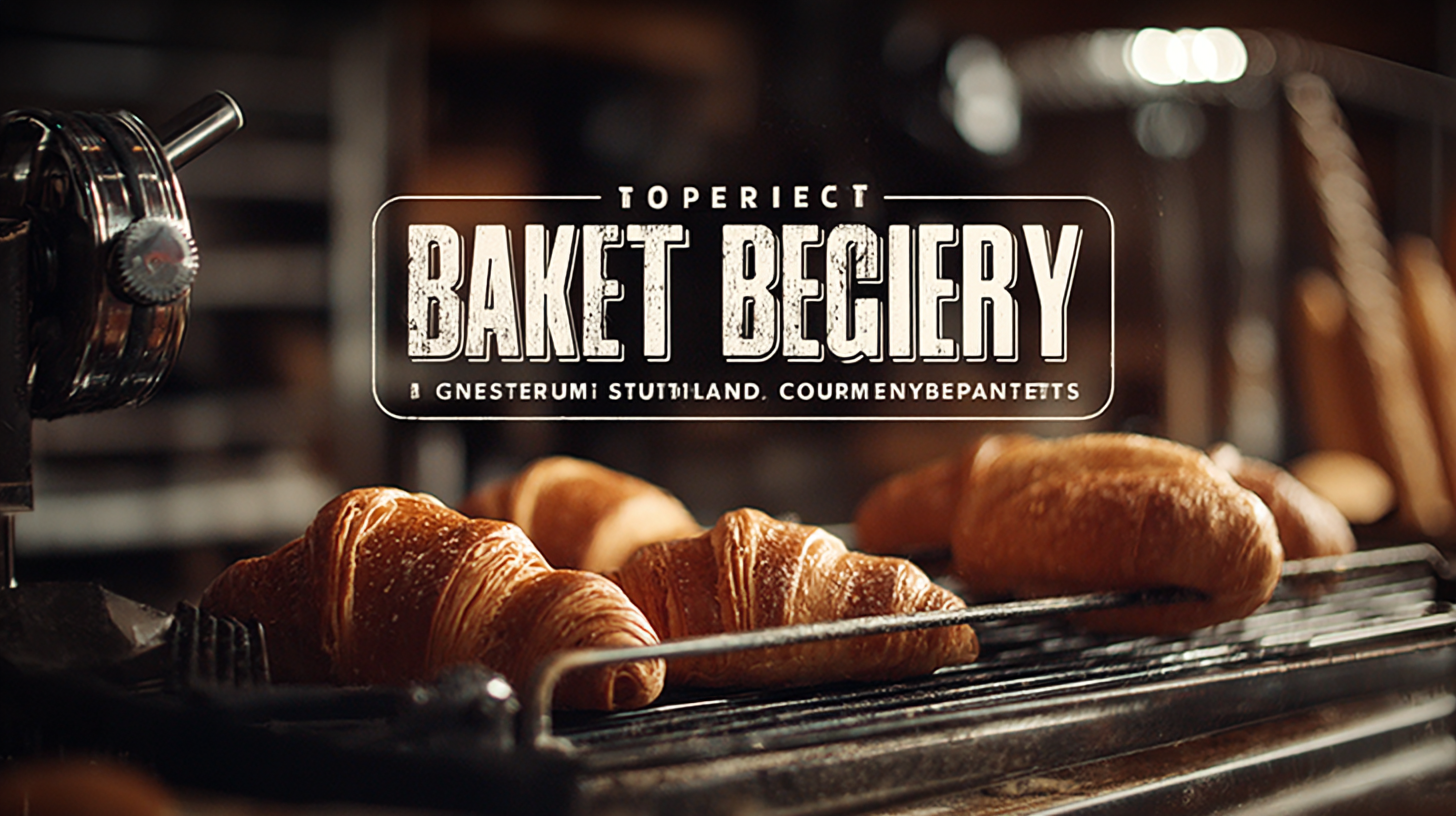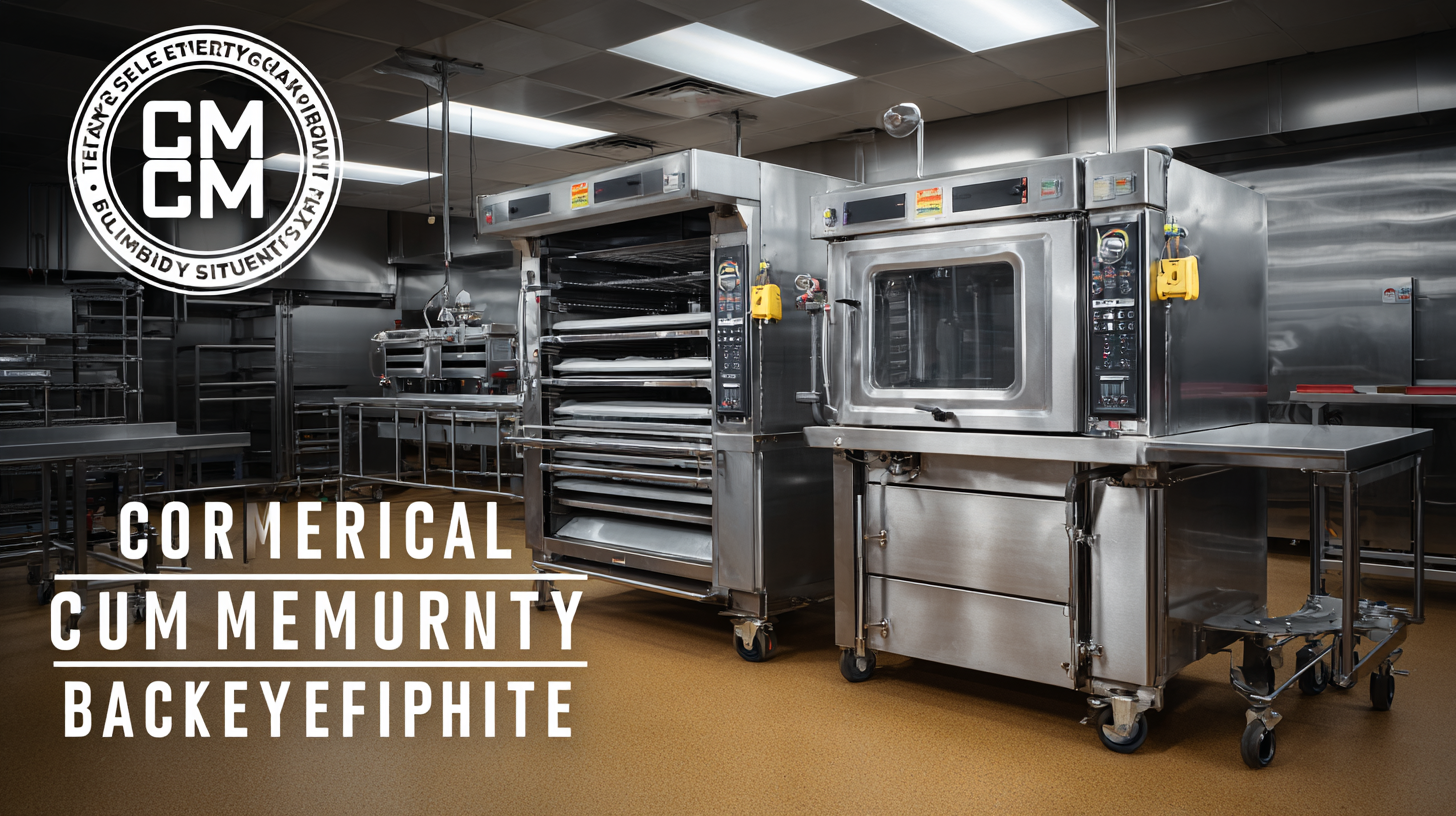Top Strategies for Maximizing Efficiency with Best Commercial Bakery Equipment
In today's fast-paced food industry, the efficiency of operations is crucial for success, particularly in the bakery sector. According to a report by IBISWorld, the commercial bakery industry in the U.S. is expected to reach a market size of $40 billion by 2026, driven by rising consumer demand for baked goods. To capitalize on this growth, optimizing production processes with the right Commercial Bakery Equipment is essential. Effective equipment not only enhances workflow efficiency but also improves product consistency and quality, leading to greater customer satisfaction.

By leveraging advanced technologies and innovative machinery, bakeries can streamline their operations, reduce waste, and minimize labor costs. This blog will delve into the top strategies for maximizing efficiency through a comparative analysis of the best commercial bakery equipment available in the market today.
Strategies for Selecting the Right Commercial Bakery Equipment Based on Industry Standards
When selecting commercial bakery equipment, it is essential to align your choices with industry standards to ensure efficiency and safety. One critical tip is to research and understand the specific requirements of your baking processes. For example, if your bakery specializes in artisan bread, investing in high-quality ovens that provide consistent heat is imperative. Familiarize yourself with local health codes and regulations, as compliance ensures that your equipment meets safety standards.

Another important strategy is to evaluate the energy efficiency of the equipment. Opt for machines that have energy-saving features or certifications, which not only reduce operational costs but also contribute to a greener environment. For instance, look for ovens with digital controls that optimize baking times while minimizing energy consumption.
Finally, consider the scalability of your equipment. As your bakery grows, your needs may change, so selecting versatile machinery that can adapt to increased output or diverse product lines is crucial. Pay attention to the warranty and service agreements offered by manufacturers, as robust support can save you time and money in the long run.
The Impact of Automation on Bakery Efficiency: Trends and Statistics
The integration of automation in commercial bakeries has become a game changer, significantly enhancing efficiency and productivity. Recent trends indicate that bakeries adopting automated equipment have observed a substantial increase in output while reducing labor costs. Statistics show that automated systems can improve production rates by as much as 30%, allowing bakers to focus on creativity and innovation.
**Tip:** To maximize the benefits of automation, invest in high-quality equipment that suits your specific production needs. Prioritizing machinery that offers versatility can allow your bakery to adapt quickly to changing market demands and seasonal products.
Another impactful trend is the use of data analytics to streamline operations. By utilizing software that tracks production metrics, bakeries can identify bottlenecks and optimize workflows. Implementing real-time monitoring can lead to improved inventory management and reduced waste, further contributing to overall efficiency.
**Tip:** Regularly analyze performance data and seek staff feedback to identify areas for improvement. Encouraging a culture of continuous improvement within the team can lead to innovative solutions that enhance operational efficiency.
Impact of Automation on Bakery Efficiency
Understanding the Role of Energy-Efficient Equipment in Reducing Operational Costs
In today's competitive market, energy-efficient equipment plays a pivotal role in reducing operational costs for commercial bakeries. According to a report from the U.S. Department of Energy, bakeries can cut their energy costs by up to 30% by implementing energy-efficient appliances. For instance, using high-efficiency ovens and refrigeration systems not only minimizes energy consumption but also ensures consistent product quality. This consistency can lead to less waste and a higher yield in baked goods, ultimately enhancing the bakery's profitability.

Moreover, energy-efficient equipment often qualifies for various incentive programs and rebates, further lowering the initial investment costs. A study by the Baking Industry Resource Competitive Initiative found that bakeries investing in energy-saving technologies reported average savings of $20,000 annually. The transition toward energy-efficient solutions is not just about compliance with environmental regulations; it’s a strategic approach that helps bakeries maintain their bottom line while promoting sustainable practices. Integrating energy-efficient equipment is becoming a smart business move as it aligns operational efficiency with financial savings.
Maximizing Production Capacity: Best Practices for Equipment Layout and Workflow
Designing an effective equipment layout is crucial for maximizing production capacity in a commercial bakery. One of the best practices is to implement a workflow that minimizes unnecessary movement and optimizes the use of space. Organizing equipment in a linear fashion—from mixing to baking to packaging—allows bakers to streamline their processes. The layout should facilitate easy access to ingredients and tools, reducing the time spent searching for supplies and increasing overall productivity.
In addition to spatial organization, integrating technology such as conveyor belts can significantly enhance workflow efficiency. By automating the movement of baked goods between different stages, bakers can reduce manual handling and the risk of product damage. It is also important to regularly assess and adjust the layout as production needs change or as new equipment is introduced. This adaptability ensures that the bakery maintains its efficiency while keeping pace with demand. Properly executed, these best practices can lead to higher output and a more productive working environment.
Analyzing Performance Data: How Regular Maintenance Enhances Bakery Equipment Longevity
Maintaining bakery equipment is crucial not only for operational efficiency but also for extending the life of your machines. Regular maintenance practices significantly enhance the longevity of equipment, allowing bakeries to operate without unexpected disruptions. One effective strategy is to implement predictive maintenance powered by IoT technology. By using real-time data from sensors, bakeries can identify potential issues before they escalate, thus reducing downtime and lowering repair costs.
**Tip 1:** Schedule regular check-ups and calibrations for all bakery equipment. Keeping equipment in optimal condition helps to avoid breakdowns and ensures consistent product quality.
**Tip 2:** Invest in IoT-enabled maintenance tools. These sensors provide critical insights into the performance and health of your machinery, allowing you to act before minor problems become major ones.
By staying proactive and leveraging technology, bakeries can ensure their equipment is always running efficiently, ultimately leading to higher productivity and reduced operational costs.
Top Strategies for Maximizing Efficiency with Best Commercial Bakery Equipment - Analyzing Performance Data: How Regular Maintenance Enhances Bakery Equipment Longevity
| Equipment Type | Average Lifespan (Years) | Maintenance Frequency (Monthly) | Common Issues | Efficiency Rating (1-10) |
|---|---|---|---|---|
| Convection Oven | 15 | Monthly | Heating Element Failure | 9 |
| Planetary Mixer | 10 | Bi-Weekly | Bowl Attachment Issues | 8 |
| Deck Oven | 20 | Monthly | Temperature Calibration | 7 |
| Dough Sheeter | 12 | Weekly | Roller Jam | 8 |
| Proofer | 10 | Monthly | Humidity Fluctuations | 9 |
